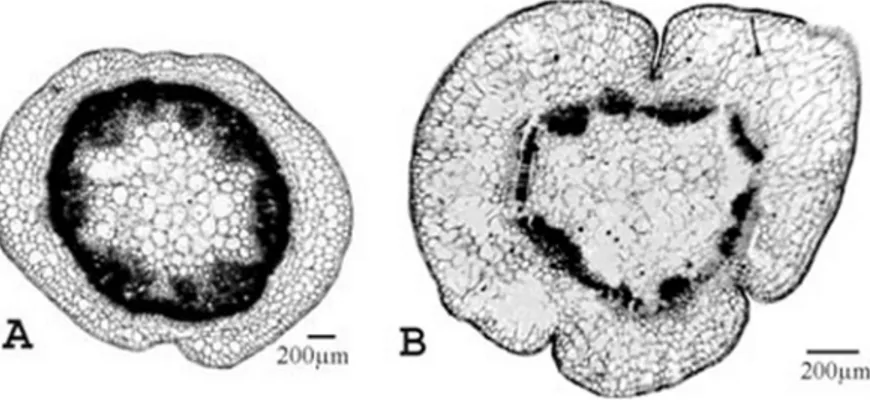Structural adaptation of Salsola soda L. (Chenopodiaceae) from inland and maritime saline area
Texto
Imagem




Documentos relacionados
‘BRS Rubi’ was negatively affected by irrigation with saline water, and the leaf area was the most sensitive variable; the highest production of seed cotton and number of bolls
(50) studied the effects of hydrogen- rich saline treatment in a mouse model of haploidentical allogenic bone marrow transplantation and found that the hydrogen-rich saline group
The experiments were conducted in isolated preparations of rat trachea obtained from rats challenged with saline or OVA that were treated by gavage with saline or with the
Figure 3 - Total hydroxyproline lung content in the different groups: SS: animals injected with saline (placebo) and then receiving intratracheal (IT) instillation of
PolyI:C (or saline) was injected subcutaneously in neonatal period, dose of 5 mg/kg from 2 to 6 Post Natal Days, and ketamine or saline at the dose 25mg/kg intraperitoneally
Based on the analysis of variance, the interaction between levels of irrigation water salinity and fertigation with different K/Ca ratios had significant effect only on the
The only limitations to saline activity are the size of the area in relation to the plains of Mossoró and Açu Rivers, the greater presence of mangrove in the plain and its
Figure 3 - Total hydroxyproline lung content in the different groups: SS: animals injected with saline (placebo) and then receiving intratracheal (IT) instillation of

